
Concept explainers
Give an acceptable IUPAC name for each of the following compounds:





Interpretation:
The acceptable IUPAC name for each of the given compounds is to be deteremined.
Concept introduction:
Alkanes have the general formula
The parent chain in each of hydrocarbon structure is first identified and the chain is numbered such that the substituents attached get lowest numbers.
Prefixes are used to denote the number of identical substituents.
The substituents are written in alphabetical order while writing the IUPAC name.
If the two groups of atoms that are the higher priority are on the same side of the double bond, then the bond is termed as the Z-configuration. While if the two group of higher priority are on the opposite side then the configuration is E-configuration.
Answer to Problem 27P
Solution:
a)
b)
c)
d)
e)
f)
g)
h)
Explanation of Solution
a) The expanded structure for the given structure can be drawn as follows:

In the above structure, the parent chain is the continuous chain from
Thus, the IUPAC name is
b) The structure for the given compound is as follows:
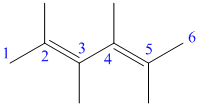
In the above structure, the parent longest chain is from
Thus, the IUPAC name is
c) The structure for the given compound and its expanded structure is as follows:

In the above structure, the parent longest chain is from
Thus, the IUPAC name is
d) The structure for the given compound is as follows:
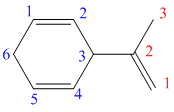
In the above structure, the parent ring contains six carbon atoms, so the parent name of the cycloalkane is cyclohexane. There are two double bonds in the given compound, the first one exist in between
Considering the Cahn–Ingold–Prelog sequence rules, for the cyclohexadiene, the higher priority groups are on the same side in both the double bonds. Hence, both get the stereochemical label as Z.
Thus, the IUPAC name of this structure is
e) The structure for the given compound is as follows:
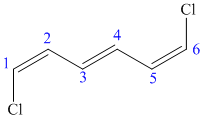
In the above structure, the parent longest chain is from
For double bonds at
For the internal double bond at carbon
Thus, the IUPAC name is
f) The structure for the given compound is as follows:

In the above structure, the parent longest chain is from
Thus, the IUPAC name is
g) The structure for the given compound is as follows:
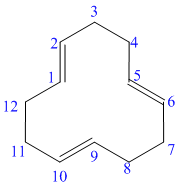
In the above structure, the parent ring contains twelve carbon atoms, so the parent name of the cycloalkane is cyclododecane. There are three double bonds in the given compound, the first one exist in between
For all the three double bonds at
Thus, the IUPAC name of this structure is
h) The structure for the given compound is as follows:
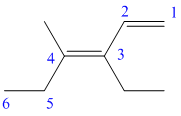
In the above structure, the parent longest chain is from
For the double bonds at
Thus, the IUPAC name is
Want to see more full solutions like this?
Chapter 11 Solutions
ORGANIC CHEMISTRY-PACKAGE >CUSTOM<
- 10. Stereochemistry. Assign R/S stereochemistry for the chiral center indicated on the following compound. In order to recieve full credit, you MUST SHOW YOUR WORK! H₂N CI OH CI カー 11. () Stereochemistry. Draw all possible stereoisomers of the following compound. Assign R/S configurations for all stereoisomers and indicate the relationship between each as enantiomer, diastereomer, or meso. NH2 H HNH, -18arrow_forwardb) 8. Indicate whether the following carbocation rearrangements are likely to occur Please explain your rational using 10 words or less not likely to occur • The double bond is still in the Same position + Likely to oc occur WHY? -3 H3C Brave Chair Conformers. Draw the chair conformer of the following substituted cyclohexane. Peform a RING FLIP and indicate the most stable conformation and briefly explain why using 20 words or less. CI 2 -cobs ?? MUST INDICATE H -2 -2 Br EQ Cl OR AT Br H& most stable WHY? - 4arrow_forwardCH 12 Conformational Analysis. Draw all 6 conformers (one above each letter) of the compound below looking down the indicated bond. Write the letter of the conformer with the HIGHEST and LOWEST in energies on the lines provided. NOTE: Conformer A MUST be the specific conformer of the structure as drawn below -4 NOT HOH OH 3 Conformer A: Br OH A Samo Br H 04 Br H H3 CH₂ H anti stagere Br CH clipsed H Brott H IV H MISSING 2 -2 B C D E F X 6 Conformer with HIGHEST ENERGY: 13. (1 structure LOWEST ENERGY: Nomenclature. a) Give the systematic (IUPAC) name structure. b) Draw the corresponding to this name. HINT: Do not forget to indicate stereochemistry when applicable. a) ८८ 2 "Br {t༐B,gt)-bemn€-nehpརི་ཚ༐lnoa Parent name (noname) 4 Bromo Sub = 2-methylethyl-4 Bromo nonane b) (3R,4S)-3-chloro-4-ethyl-2,7-dimethyloctane # -2 -2arrow_forward
- in the scope of the SCH4U course! please show all steps as im still learning how to format my answers in the format given, thank you!arrow_forwardhelp me solve this HWarrow_forwardMolecules of the form AH2 can exist in two potential geometries: linear or bent. Construct molecular orbital diagrams for linear and bent CH2. Identify the relevant point group, include all of the appropriate symmetry labels and pictures, and fill in the electrons. Which geometry would you predict to be more stable, and why? (Please draw out the diagram and explain)arrow_forward
 Organic ChemistryChemistryISBN:9781305580350Author:William H. Brown, Brent L. Iverson, Eric Anslyn, Christopher S. FootePublisher:Cengage Learning
Organic ChemistryChemistryISBN:9781305580350Author:William H. Brown, Brent L. Iverson, Eric Anslyn, Christopher S. FootePublisher:Cengage Learning
